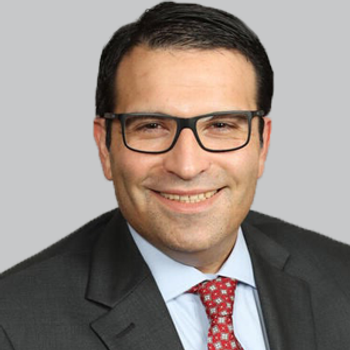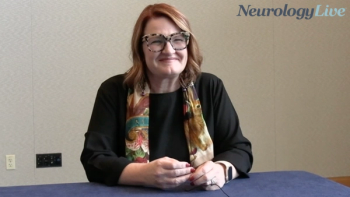
Understanding Patient Subgroups Who Benefit From Tenecteplase After 4.5 Hours: Gregory W. Albers, MD
The professor of neurology and director of the Stanford Stroke Center provided commentary on clinical implications of findings from the TIMELESS trial assessing tenecteplase initiated in the late window after stroke onset. [WATCH TIME: 4 minutes]
WATCH TIME: 4 minutes
"The other point that’s very important is that this was the first time an IV thrombolytic was given all the way out to 24 hours and had no safety issues. There was no evidence of an increase in any type of brain hemorrhage related to tenecteplase."
Tenecteplase is a modified form of human tissue plasminogen activator that was approved in 2000 to reduce mortality among patients with acute myocardial infarction. The TIMELESS trial (NCT03785678) was designed to test the hypothesis that intravenous (IV) Tenecteplase, initiated 4.5 to 24 hours after stroke onset, would provided a benefit in patients who had a large-vessel occlusion of the internal carotid artery or the first (M1) or second (M2) segments of the middle cerebral artery and had evidence of salvageable ischemic brain tissue identified on CT perfusion or MRI perfusion-diffusion studies.
Led by Gregory W. Albers, MD, the trial included 458 patients, 77.3% of whom subsequently underwent thrombectomy; 228 patients were assigned to receive Tenecteplase, and 230 to receive placebo. In the trial, those with occlusions of the internal carotid artery or the M1 segment were anticipated to receive standard-care endovascular thrombectomy in addition to Tenecteplase or placebo, whereas the use of endovascular thrombectomy in patients with an occlusion of the M2 segment was at the discretion of the treating physician. Ordinal scores on the modified Rankin scale (mRS) at day 90 were considered the primary end point.
Published in the New England Journal of Medicine, results showed an adjusted common odds ratio (OR) of 1.13 (95% CI, 0.82-1.57; P = .45) for the distribution of scores on the mRS at 90 days for tenecteplase as compared with placebo. In a subgroup analysis, among patients with occlusion of the M1 segment, functional independence (mRS scores ≤2) at 90 days occurred in 45.9% of those in the Tenecteplase group, as compared with 31.4% of those on placebo (adjusted OR, 95% CI, 1.14-3.66).
In an interview with NeurologyLive®, Albers, professor of neurology and director of the Stanford Stroke Center, discussed the findings in detail and the clinical takeaways neurologists should have from TIMELESS. Albers, who is also the cofounder of RapidAI, discussed the overall design of the trial, the role of thrombectomy in stroke care, and the various subgroups observed.
REFERENCE
1. Albers GW, Jumaa M, Purdon B, et al. Tenecteplase for stroke at 4.5 to 24 hours with perfusion-imaging selection. NEJM. Published February 8, 2024. doi:10.1056/NEJMoa2310392
Newsletter
Keep your finger on the pulse of neurology—subscribe to NeurologyLive for expert interviews, new data, and breakthrough treatment updates.


































